Posts Tagged ‘veterinary care in Edwardsville’
How Often Should I Bathe My Dog?
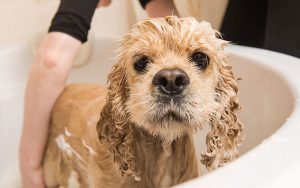 We as humans bathe at least once daily. Right? So should pets get bathed daily also? This is one of the questions that we get from pet owners regarding their four-legged family member. Generally my answer to the question would be no, but there are many factors that go into determining the proper frequency.
We as humans bathe at least once daily. Right? So should pets get bathed daily also? This is one of the questions that we get from pet owners regarding their four-legged family member. Generally my answer to the question would be no, but there are many factors that go into determining the proper frequency.
Obviously if your pet has been running and playing outside a lot and they are dirty and very odorous, then they possibly should be bathed. But why do we even bathe our pets? The easy answer is for its health. Without one, your dogs’ skin could get irritated and infected and its coat could get matted and hard. A dog’s breed, coat characteristics, and other variables play a factor in this.
So how often do we bathe a dog? The top reason is when the smell. Easy rule of thumb is if it smells beyond just normal dog smell, it’s time for a bath. If you are unsure about the skin, I would recommend talking to experts in the field like your veterinarian or a professional groomer. They can help you understand what may be the best options for your pet.
If your pet has skin issues, it may be prescribed a medical shampoo. As a dermatological professor told us—if it is wet, you want to dry it and if it is dry you will want to add moisture. Unfortunately, there is not one shampoo that will do both.
As human’s have different hair and skin issues, so do dogs. Some breeds are double-coated breeds. These breeds like the Samoyed, Alaskan Malamute and the Chow Chow most likely will require less frequent bathing but more brushing to keep their coats healthy and clean. By contrast, a breed like the Bassett Hound has a more oily coat, so it may require more frequent bathings. Short haired breeds like Dalmatians and Weimaraners tend to require very few bathings as they can regulate their natural oils without much help.
Now that we have determined factors that play into bathing your pet, what do we buy? First you will need a shampoo that will be appropriate for your pet as we have discussed previously. Secondly, some lukewarm water. Hot water can burn your pets skin and dry it out. Rule of thumb– the cooler the better. A good brush is good to have on hand. Prior to bathing it is best to comb out your pet and shed any dead hair. By combing agains the coat, you can prevent mats and help spread out your pet’s natural oils. Be sure that you have towels on hand to wipe them dry. I do not recommend using a blow dryer as the heat will dry out the skin. There are also dry shampoos out there that you can use to spray them down with and wipe it off without having to bathe them to preserve the natural oils.
So you are still confused about bathing your pet? Remember that we are always here to assist you, so please don’t hesitate to call us at (618)-656-5868.
Pet Gift Guide For The Holidays – 2018
 Christmas is a time for giving, so why not give something to that family member that is there for you unconditionally. No I am not talking about your spouse or children—I am talking about your pet. Throughout the year, I make note of items or websites that can offer quality and safe products for your furrbaby. While most are websites that have quality products, I have included a few toys that may be attractive to you and your pet.
Christmas is a time for giving, so why not give something to that family member that is there for you unconditionally. No I am not talking about your spouse or children—I am talking about your pet. Throughout the year, I make note of items or websites that can offer quality and safe products for your furrbaby. While most are websites that have quality products, I have included a few toys that may be attractive to you and your pet.
- Petsafe Busy Buddy dog toys – There are many toys made by this company including the Nobbly Nubbly Dog Toy. This company makes playtime with your pet last longer by dispensing treats as your pet plays. The toys are designed for specific purposes or specific kinds of play.
- Bumble Ball Motorized Dog Toy – This toy is a “blast-from-the-past”. It is a retro toy brought back from the early 1990’s. Your pets go crazy trying to catch the bumpy ball. Pets are entertained with unpredictable jumps, shakes, wiggles and bumbles. This is not a chew toy and is not recommended for aggressive dogs.
- Barkbox.com– Who doesn’t like to receive packages in the mail. Your pet will. This is a company that sends out boxes monthly for your pet that is similar to the fruit of the month subscriptions but it is for your pet. You can order a 6 or 12 month plan so that every month you will receive a box that contains 2 toys that are not fuzzy, 2 full bags of treats, and 2 meaty chew treats. The costs for the boxes start at $29, but you will get over a $45 value in each box.
- Meowingtons.com –For the cat fanciers that are trying to find the purrfect gift for the cat lover or their pet. The company has a selection of items for the owner and pet toys to keep the cat active or looking cute.
- Pet DNA testing –There are many companies out there, but these tests are available for both cats and dogs. By knowing the breed makeup of your pet, you can get an idea of what issues might be forthcoming to your pet due to its breed.
- Tipsyelves.com– Ooh, baby it is cold outside. We can’t let our fur babies go outside without them being protected from the elements this holiday season. So why not get them a festive sweater to help make them look dapper and in the holiday spirit. These are quality products that come in a number of different styles.
At this time, I would like to thank all of my clients for making 2018 a prosperous year and wish each and every one of you a joyous holiday season. If you have any questions please do not hesitate to contact us or give us a call at 656-5868.
What To Do When Your Pet Is A Handful – And You Are Leaving Town
 You are about to experience the trip of a lifetime, but there is only one problem. You have a pet that is very unruly and it is hard to leave it behind because all your friends and family scatter when asked to take care of it. Have you ever had that scenario? I am sure a few of the readers have. So what options are out there that will give you piece of mind that your pet will be taken care of?
You are about to experience the trip of a lifetime, but there is only one problem. You have a pet that is very unruly and it is hard to leave it behind because all your friends and family scatter when asked to take care of it. Have you ever had that scenario? I am sure a few of the readers have. So what options are out there that will give you piece of mind that your pet will be taken care of?
Family/Friend:
Consider taking your pet to a friend or family member that has pets, but make sure they are accustomed to each other. Friends that are also pet owners are very likely to be able to handle a pet that is a handful.
Pet Sitter:
Another solution may be to hire a pet sitter that will stay in your home 24/7. That way your pet will not need to leave your house and can retain their comfort and schedule in your own home. Professional pet sitters are typically well equipped to handle pets that are rambunctious.
Dog Kennels:
A not so new trend is the dog kennels. Marketing has kindly changed their names to pet hotels. Your pet may actually enjoy it. A lot of them offer daycare also, so you may consider taking them for daycare or a weekend prior to you leaving. If they enjoy it, then you may feel better about leaving them there. Some also have pet cams so that you may be able to check in on them anytime day or night. Make sure you bring your pet in before going, as most establishments require your pet be up to date on vaccinations.
Lastly, a refresher obedience class can be a good idea. Positive-reinforcement or private classes make work best.
With the upcoming holiday season, our readers may happen to have this situation. The Olsen Veterinary Clinic can offer advice to our clients and give them some options that are out there. Please call the office at (618)-656-5868 for questions or comments.
Dr. Olsen’s Breed Spotlight: Pixie-Bob Cat
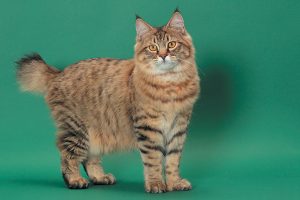 Dogs are considered “man’s best friend.” But what do you get when you don’t have room or time for a dog? How about a cat that thinks it’s a dog? The breed of cat that I am spotlighting this month has been described as that. It is called the Pixie-Bob.
Dogs are considered “man’s best friend.” But what do you get when you don’t have room or time for a dog? How about a cat that thinks it’s a dog? The breed of cat that I am spotlighting this month has been described as that. It is called the Pixie-Bob.
The Pixie-Bob breed is thought to be the result of the natural mating between a bobcat and a domestic shorthair, but they may also have sprung from a natural genetic mutation that gave them their wild look and bobbed tail. It is one of those mysteries that no one will ever know for sure. This breed was first developed in the Pacific Northwest in the mid 1980’s by a woman that acquired a male kitten with distinctive characteristics like a spotted coat, a short tail and more than usual numbers of toes. A year later, she acquired another male cat with a short tail and with the help of a neighbor’s female cat, produced a litter of kittens. One, a female, had a muted spotted pattern and the woman kept her—naming her Pixie. The breeder wanted more cats like Pixie, and soon the breed was born. They were recognized as an actual breed by the American Cat Fanciers Association in 2005.
Pixie-Bobs are described as “big, lively and outgoing.” The breeds’ devotion to its family belies its somewhat wild look. They tend to be a large cat where the male and female can weigh up to 12 and 25 pounds respectively. They are brawny and muscular which is why some breeders believe that the Coastal Red Bobcat had to be the founding father. Their ears tend to be tufted and resemble that of a bobcat by having lynx tips on the ears. Pixie-Bobs have a thick wooly coat like a bobcat and can be either long or short haired. They normally have a striped coat pattern and come in a variety of colors, but most are tawny, light gray, or reddish. Their eye color can be from golden brown to gooseberry green. A Pixie-Bob’s tail is a minimum of 2 inches by can be as long as to their hock. Their facial hair grows downward giving them the appearance of a man’s muttonchop sideburns. One other unique feature that some Pixie-Bobs have are that some are polydactyl. This means that they have more than the usual number of digits on its paws. Polydactyl cats are considered lucky, so if you own a Pixie-Bob, luck may be on your side.
Pixie-Bobs are inquisitive and like to interact with families, so they are true companions and members of the family because of their relaxed attitude. They communicate with their families with a pleasant voice and standard meows and purrs. They are active and enjoy being friends. They enjoy interaction with families and have been described by some as “the cat that thinks it is a dog.” Pixie-Bobs love going on car rides and walks just like dogs. They also get along well with dogs and other pets. Because they tend to be a medium to long haired breed, they do require a weekly brushing to prevent mattes from forming and regular nail trims.
If you have a Pixie-Bob cat or even a good ol’ domestic shorthair, the Olsen Veterinary Clinic tries to meet the expectations for all of your pet’s needs. If you have any questions or issues please do not hesitate to call us at (618)-656-5868.
Dog Park Safety Tips
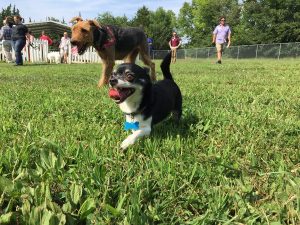 With the pet business becoming a multi-billion dollar business in recent years, it is telling us that more and more people have pets and are taking care of them. Among the fads, if you want to call it that, are “doggy daycares”, mobile groomers and dog parks. A lot of these services are great ideas as far as convenience is concerned, but how safe are they to our pets? Especially the dog parks.
With the pet business becoming a multi-billion dollar business in recent years, it is telling us that more and more people have pets and are taking care of them. Among the fads, if you want to call it that, are “doggy daycares”, mobile groomers and dog parks. A lot of these services are great ideas as far as convenience is concerned, but how safe are they to our pets? Especially the dog parks.
No, I am not going around and saying that dog parks are bad for you dog, but there could be some hidden dangers that may be lurking for the unprotected dog. Most dog parks are public places, so there is a good possibility that not all dogs are properly vaccinated against diseases such as Parvovirus, Roundworms, or even Kennel Cough. These diseases can occur during direct contact with another dog, or even if your pet has licked an area that harbored the diseases or parasites. So my advice is to make sure that your pet is currently vaccinated for all diseases. If they’re not—do not take them there. It is not worth it to possibly expose your pets to those diseases if you can help it.
We all see the dogs being playful in the park, but how do we know that the other pets can’t become overly aggressive? Because of this, I would recommend that your pet be kept on its leash. I know that is not the reason for dog parks, but that way you can control your pet if they or another pet exhibits some aggression so that you may prevent injury and not be faced with a costly veterinary visit.
If you allow your pets to run free in the park, injuries such as torn cruciates and other lamenesses can occur. To reduce this possibility, it might help to train your pets for the rigors that a dog park presents.
Dog parks are popping up in a lot of the communities. Realize that just because they are in a fenced in environment, they are not always completely safe. If you have any questions or issues, please feel free to contact us or give us a call at 618-656-5868.
How To Help Your Pet That Has Arthritis
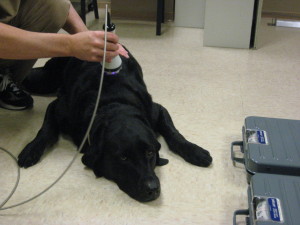 Everything gets older, including our pets. Sometimes this can lead to arthritic pain in their joints. Depending on the breed and size, arthritic changes can occur at an early age or later in life. No matter when symptoms start occurring, we as owners want to limit the pain and slow down the progression of the arthritic changes so that our pets can have a long, relatively pain-free life.
Everything gets older, including our pets. Sometimes this can lead to arthritic pain in their joints. Depending on the breed and size, arthritic changes can occur at an early age or later in life. No matter when symptoms start occurring, we as owners want to limit the pain and slow down the progression of the arthritic changes so that our pets can have a long, relatively pain-free life.
The joints maintain their ability to function because of the joint fluid that is produced by the cartilage that lines the joints. If the cartilage is damaged, it heals and repairs itself, but it is replaced by bone. And bone does not secrete joint fluid. So as the bone is replacing the joint cartilage, there is less joint fluid. With less joint fluid, there is more pain.
So when we get to the point where there is arthritic changes, what can we do to ease the pain and maintain relatively pain free function? There are many options for us to explore that will aid in slowing the progression of the arthritic changes which might range from supplements to surgical replacements or procedures.
Sometimes a supplement like glucosamine can help by reducing the inflammation of the cartilage of the joint. This product is relatively inexpensive and is available at pet stores along with being supplemented in the pet’s food. A product that I use called Adequan also assists the joints by slowing the breakdown of the joint fluid to provide better viscosity and lubrication. Here at Olsen Veterinary Clinic, I routinely will use a therapeutic laser to aid in the reduction of inflammation and pain in the joints. I have found that it can benefit the pet.
A lot of times, we will prescribe a nonsteroidal anti-inflammatory like Deramax or Previcox that will reduce the inflammation in the joints and ease the pain that the arthritic disease causes. There are numerous NSAID’s out there that we use with some being once or twice daily dosing.
Recently, medical and surgical procedures have been developed that can assist your pet with arthritis. These may include Stem Cell Therapy, joint replacement, or other procedures that will alter the joint itself for better pain free articulation.
Arthritis in pets is very common and we have many options at our disposal that won’t break the bank for the owners. Please give us a call at 618-656-5868 or contact us here for some options that may be available for you and your pet.
What Pets Do To Make Our Lives Better
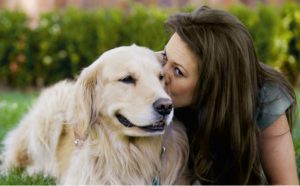 As many of you know, I usually write monthly blogs informing the readers about what we can do to make your pets’ lives better and happier. However this month, I am reversing the trend and writing about what pets do to make our lives better.
As many of you know, I usually write monthly blogs informing the readers about what we can do to make your pets’ lives better and happier. However this month, I am reversing the trend and writing about what pets do to make our lives better.
It is a proven fact that pets can reduce anxieties that we have. To people with anxieties, pets can be like a superhero. Everyone has their own coping mechanisms that work for them, but sometimes having a pet can curb anxiety. By just having a pet present, even though it can’t talk, a person’s phobic and anxiety disorders are often reduced by the pets companionship. This relationship builds self confidence for people that are anxious when they go out in the world.
With depression, people tend to self isolate. So with having a pet, people are forced to go out and walk.
Pets are always down to cuddle. That contact can do wonders to curb anxiety. Maybe it makes you feel less alone or less like you have to handle everything by yourself. With this bonding, one gets a mutual relationship in which the pet and owner give warmth, love and nurturing. Research has also shown that tactile sensations can even lower blood pressure.
Pets are always the ones that listen and don’t ever offer advice. As humans, sometimes we don’t want advice—we just want to vent. A pet will never try to fix you. You can sit for hours on end ranting and they will never try to solve you or your problems. A pet sitting there listening loves you and sometimes that is all you need.
Pet ownership is good not only for people living alone, but for whole family systems. Pets become full members of the family in which lots of interaction swirls around children, parents and siblings as they compete to feed, love and care for the pet. So with a pet at home, this offers a distraction so that a tiny bit of anxiety doesn’t amplify to a big deal. Pet ownership can teach children the value of life in addition to providing them with some sort of responsibility of care and feeding.
Having a pet at home means that there is someone waiting for you to come home and be with you when you are there. Having a pet can give one a sense of security and help with dealing with aloneness better. A pet can provide someone to talk to in order to ease your nerves. A pet there will mean that you are never alone.
Having a pet can help us meet new people. With pet ownership, it requires responsibility and part of that is exercising your dog. While on walks you can make friends and hold conversations with other people. Pets are a great conversation starter, so with them, we can socialize.
No matter what, pets offer unconditional love. Sometimes it feels like no one really likes you. But your pet will always be that person that is on your side.
The benefits of pet ownership are many and they are very much an integral part of our lives. Because of this, we want them to live as long as possible. So it is important to take care of them. If you have any questions, please don’t hesitate to call us at 656-5868.
How To Get The Skunk Smell Out of Your Pet’s Fur
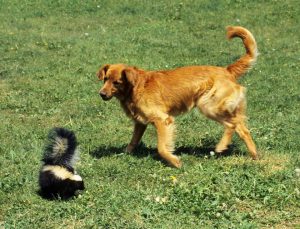 Ooh, that skunk smell. We all know that odor when our beloved dog comes back in and has had the unfortunate pleasure of meeting the neighborhood “Pepe Le Pew.” No matter what, the odor is very unpleasant and tends to linger wherever your pet lies. The skunk oil from the spraying can linger for up to a year if it is not removed from your dogs’ skin and coat. So it is essential that you effectively clean and bathe your pet.
Ooh, that skunk smell. We all know that odor when our beloved dog comes back in and has had the unfortunate pleasure of meeting the neighborhood “Pepe Le Pew.” No matter what, the odor is very unpleasant and tends to linger wherever your pet lies. The skunk oil from the spraying can linger for up to a year if it is not removed from your dogs’ skin and coat. So it is essential that you effectively clean and bathe your pet.
I have found that the first thing you do not want to do is to bring you pet inside. As stated before, the scent can linger for up to a year and anything that your pet has touched can harbor the odor. So leave it outside. Skunk spray is very irritating to your dogs eyes. So if you notice their eyes watering or red, then rinse them with water or gentle eyewash solutions. Any solution but Visine is fine. Once you have addressed the face, it now time to tackle the smell on his body.
There are several methods that can be used for de-skunking a dog, however most methods will need to be repeated more than once. The best formula that I have found is as follows:
- ¼ cup of baking soda
- 1-2 teaspoons of mild dishwashing detergent such as Ivory Snow
- 1 quart of 3% Hydrogen Peroxide solution
- Mix in bucket and use immediately
- Work the foaming mixture well into the coat
- Leave on for five minutes
- Rinse with warm water
- Follow with dog shampoo if desired
The quicker you can get to it, the better the results since the oil hasn’t saturated into the hair yet. It may be necessary to repeat the procedure several times.
It is important to be careful around the eyes as hydrogen peroxide can burn and irritate the eyes. The hydrogen peroxide may also bleach your pets’ coat blond so be careful with black coated dogs. Also discard the solution after use and never store it in a closed container as it will explode.
While no method is foolproof, there are many ways to help your dog avoid getting sprayed by a skunk again. Since skunks are nocturnal animals, consider leaving a light on in the yard or accompany your dog outside when you take it out in the evening. You may also set up some solar lights so that your yard is well lit throughout the night. Automated sprinklers set to turn on throughout the night may also be a good way to deter skunks from roaming in your yard. Always remember to cover your trash cans and take your dogs indoors for treats at night so that skunks aren’t lured in by a possible free meal. If you believe that you have a serious skunk problem you may want to call a critter control specialist to assist in removing the unwanted pest.
If you have any questions or other solutions about pests like skunks, we would like to hear from you. Please call us at (618)-656-5868 or contact us here.
Dr. Olsen’s Breed Spotlight: Barbet Dogs
 There are over 340 dog breeds in the world, but only 167 breeds are recognized by the AKC here in the United States. This month for our breed spotlight, I am highlighting a breed that has a storied history. Surprisingly, it has only been recently recognized as a distinct breed by the AKC organization. Let me introduce you to — the Barbet. At one time there used to be around 25 in the whole United States, now there are an estimated 300 Barbets in the country.
There are over 340 dog breeds in the world, but only 167 breeds are recognized by the AKC here in the United States. This month for our breed spotlight, I am highlighting a breed that has a storied history. Surprisingly, it has only been recently recognized as a distinct breed by the AKC organization. Let me introduce you to — the Barbet. At one time there used to be around 25 in the whole United States, now there are an estimated 300 Barbets in the country.
Barbet’s (pronounced bar-bay) are a breed that has been traced possibly back to the 14th century for hunting waterfowl in France. One person of royalty who was noted to be fond of them was Henry IV. There is a story in history that one of the king’s mistresses was told off for trying to bring one into a church. It is thought to be related to such breeds as the Poodle, American Water Spaniel, the Otterhound and the Portuguese Water Dog. In fact for many years, the Barbet and the Poodle were referred to as the same dog. It’s main usage was for hunting game and retrieving waterfowl. The breed survived for many years, however it was nearly extinct due to loss of huge numbers during World Wars I and II. Through the efforts of a very devoted few, the old breed is being reborn as a dog of the future.
Barbets have a wooly coat that gives them excellent protection when working. They also have a distinct beard, hence where their name came from, ( “barbe” is french for beard.) They have webbed paws to make them fantastic swimmers and are sometimes referred to as the “mud dog” because it would often get pretty dirty in pursuit of waterfowl.
This medium-sized dog averages between 35 and 60 pounds with heights of 19 to 24 inches at the withers. They have a life span of 12 to 15 years. The Barbets are very intelligent and perform well in confirmation, agility, obedience, rally and retrieval trials. Barbets are calm, friendly and affectionate, so they can be good pets for families as long as their exercise needs are met. They enjoy outdoor activities and are gentle with children, which can make them attached to their families. Sometimes they may suffer from separation anxiety. They are also good with other pets including cats if they are socialized at an early age.
Barbet’s are all shades of black, gray, brown, and fawn with or without white markings. They have long ears that extend past their jaws. Because they have hair and not fur, they can be considered hypoallergenic making them a good option for people who want a dog but suffer from allergies. Because the hair is so long, they will require some commitment to brushing and combing the long coat daily so that it doesn’t matte, especially if they swim a lot. It is also a breed that will need to be taken to a professional groomer regularly so that the hair can be trimmed from its feet and ears.
Surprisingly, Barbets are a relatively healthy breed, with just a few health issues noted as common in the breed. These include elbow dysplasia, hip dysplasia, eye problems, such as entropion and cataracts, and epilepsy.
In general, the Barbet is a great dog for hunting if you need a soft-mouthed retriever, or as a family companion. It can live in homes for most type of people including young and old. It does need exercise so it will need room to explore. Barbets are friendly, loving and devoted and will want to hang out with you and it prefers that you not be out all the time. It is a brave dog that is quite happy to play around in the mud, so get ready for some fun bath times if this breed for you.
Why Cats Spray And Mark In The House
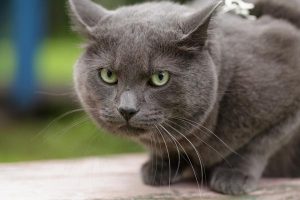 Ooh, that smell! That is the reaction when someone gets wind of where a cat might have sprayed or inappropriately urinated. These episodes are really very common in cats and can infuriate the cat owners enough to lead to rehoming of their cats. Before you go down that path, let’s educate ourselves about why cats spray so that we can deal with the problem – or even better, prevent possible cat urinary problems.
Ooh, that smell! That is the reaction when someone gets wind of where a cat might have sprayed or inappropriately urinated. These episodes are really very common in cats and can infuriate the cat owners enough to lead to rehoming of their cats. Before you go down that path, let’s educate ourselves about why cats spray so that we can deal with the problem – or even better, prevent possible cat urinary problems.
First we need to determine if it is behavioral or medical. Medical issues can cause inappropriate urination or marking and it is best to have them examined by a veterinarian to diagnose the problem. This would include Urinary Tract Infections, bladder stones and crystals, or possibly “idiopathic cystitis”. A medical diagnosis can be made by examining your cat, checking the cats’ bloodwork and doing a urinalysis on it. If there is something medical going on, antibiotics and maybe a diet change will be indicated.
Based on my experience, behavioral issues tend to be more difficult to treat. First we need to determine what factors are causing your cat to behave this way. Causes can include:
- Undesirable Litter Box: Cats are particular about their toilets. The litter box may be simply too dirty, or it may be clean, but it may be too small. In multi-cat households, there may not be enough of them. The rule is to take the number of cats you have and add one litter box. The location of the litter box may be an issue. Finally, it might be the scent of the litter. Experts recommend that unscented, scoopable litter be used.
- Stress in the Home Environment: Scent is the primary way that cats communicate. They have scent glands on their cheeks, paws and flanks so when they rub objects, they are putting their scent on that object. This is sending the message that they’ve been there and are staking their claim to tell the other cats to back off. In multi-cat households, this rubbing helps to establish territories and create bonds between the pets. The cats may feel that it is too dangerous to access the litter box. They may also act out if there is a new human in the home. Cats are very sensitive to the smallest changes in the environment.
- Old Urine Smells: If your cat has urinated on an area and you clean it up, the smell might remain. A cat’s sense of smell is much better than yours. If old urine odors remain in your home, there is a very good chance that your cat is returning to the area because of the smell. She will continue to urinate in the area that smells like urine. Because of this, it is essential to thoroughly clean any areas where the cat has urinated using a special cleaner.
In general, the key to stopping inappropriate urination in cats or avoiding it all together is as simple as being a responsible and attentive cat owner. Keep your cat healthy by visiting your veterinarian with routine health checkups. When issues arise, have the issue diagnosed and treated effectively and immediately. Make sure that the litter box is as attractive to your cat as possible, and clean up urine accidents thoroughly. Minimize stress in your cat’s environment. If you have any questions, please don’t hesitate to contact us call us here at the Olsen Veterinary Clinic at (618)-656-5868. Do all this, and your cat will thank you.
